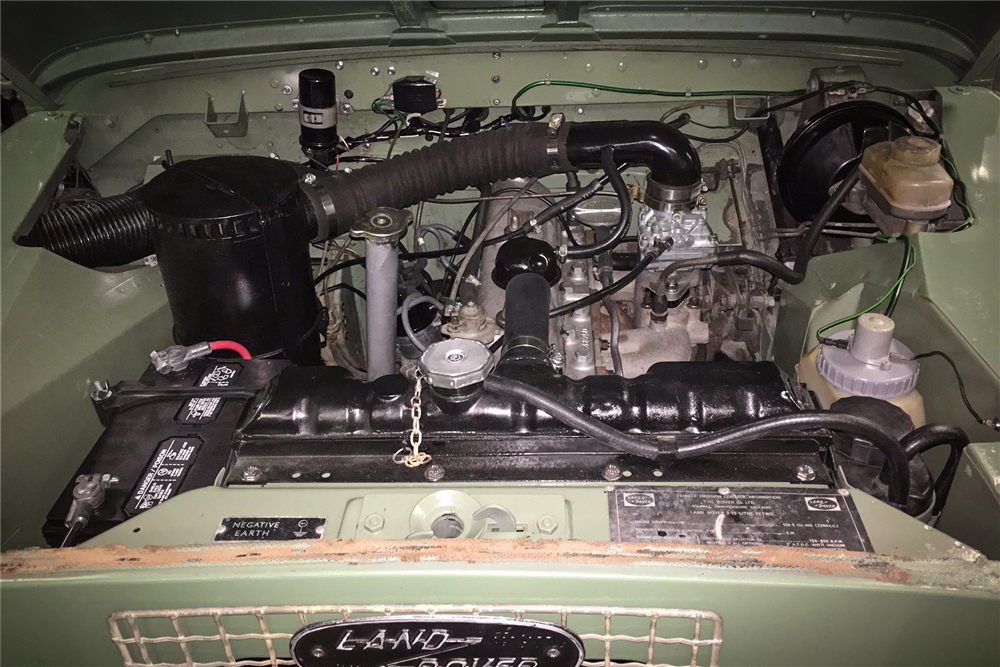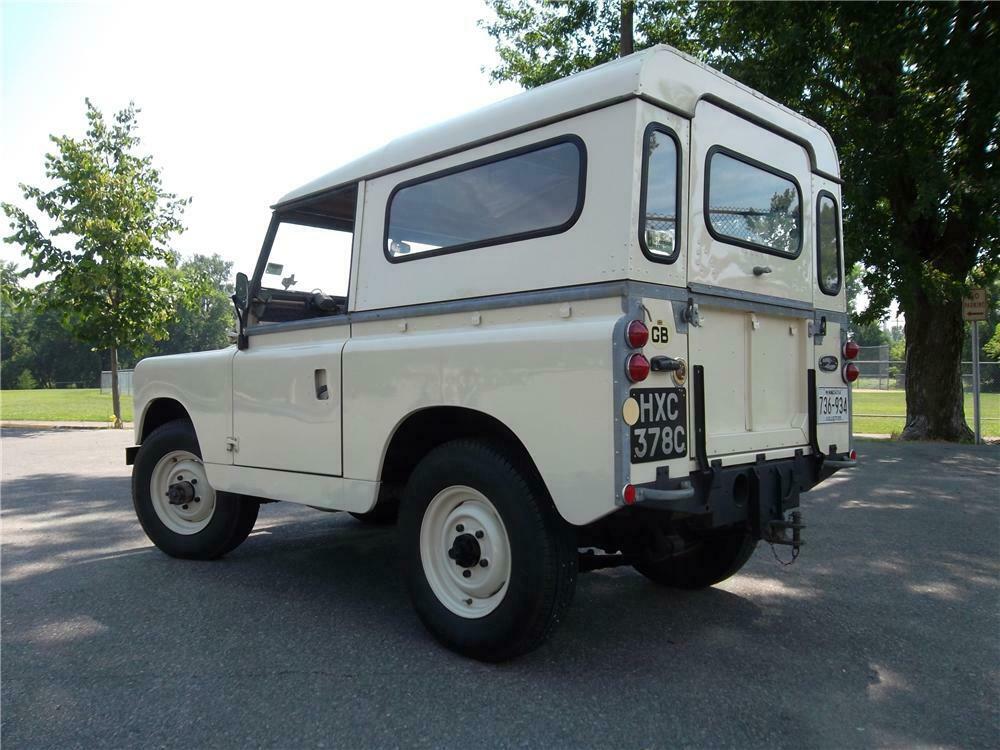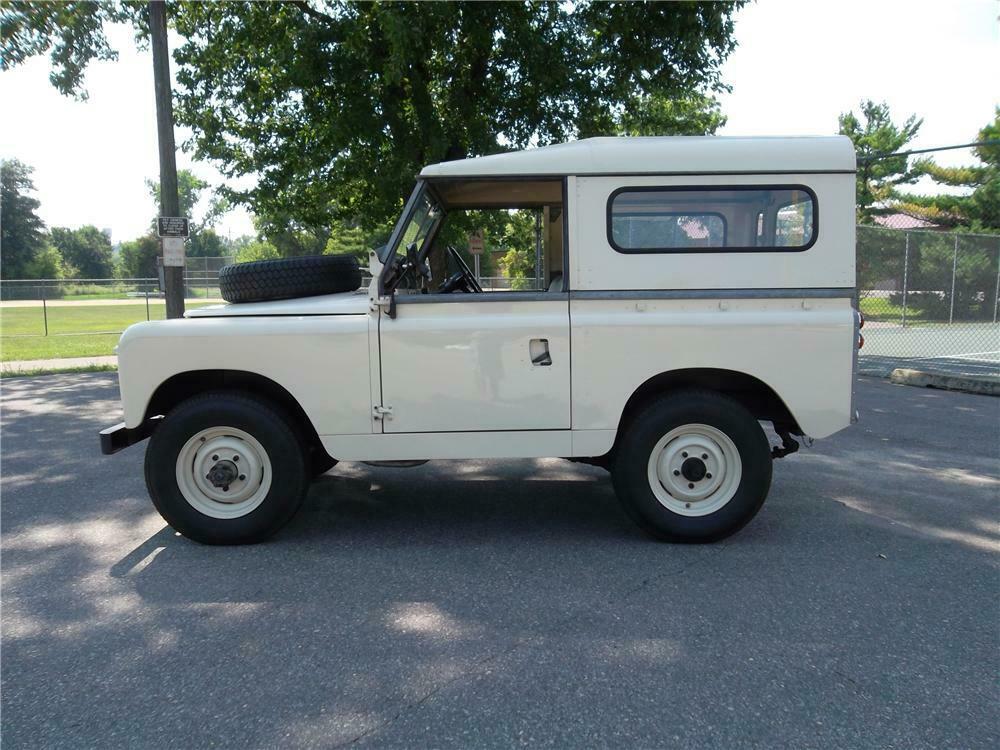Values for the 1959–71 Land Rover Series II/Series IIA keep climbing
The 1959–71 Land Rover Series II/Series IIA is a rugged off-road vehicle known for its ability to overcome obstacles and climb hills. Its values have done nothing but climb too.
In fact, the value of a Series II/Series IIA in #2 (Excellent) condition has never slid backwards since Hagerty started tracking it—not even a smidge.
“The Series II Land Rover is the one that solidified the company’s reputation for utility, and it’s the reason why you think of a Land Rover when imagining an African safari or trek through the Australian Outback,” says Andrew Newton, Hagerty’s valuation editor. “It also established the barrel-sided shape worn by Land Rovers well into the 21st century and, since they weren’t sold in large numbers in the U.S., there’s something a little exotic about a Land Rover, compared to the equivalent Jeep or Land Cruiser.”
The median #2 value for Land Rover Series II/IIA models has increased 18 percent in the past two years, standing now at $39,000. Series II and IIA values increased by almost 2 percent across the board in the last two months, which is a larger increase than most other vehicles in the we track.



Some history: Rover designer Maurice Wilks had been using an old military Jeep on his farm, which gave him the idea to build a similar vehicle for Rover. He constructed the 1948 Rover body in alloy because steel was rationed in postwar Britain, but he continued using aluminum even after it became more expensive than steel.
The Series II included a wider track (distinguished by the curved upper edge of the body rather than the totally flat sides of the Series I) and a larger 2.25-liter engine. The Series II 88 is the shorter, two-door-only model (88-inch wheelbase), while the Series II 109 is the longer, two- or four-door model (109-inch wheelbase).
Series IIA came out in 1961, and by 1968, the 109 models has a 2.6-liter straight-six gasoline engine. Engines included a 2052-cc diesel or gas four-cylinder, a 2286-cc diesel or gas four, and 2625-cc gas six. Body styles for the 88 were a two-door soft top and two-door wagon, while 109 body styles included a two-door pickup, two-door soft top, two-door wagon, and four-door wagon. For 1969, the headlights moved outboard instead of on either side of the grille.
The median value for a soft top is 2.2 percent more than the wagon, and the median value for a gasoline engine is 6.2 percent more than a diesel.

The most valuable IIA 88 models are two-door soft tops with a 2286-cc/77-hp gas engine, specifically 1962–68 models. Average values are $58,500 in #1 (Concours) condition, $44,900 in #2 (Excellent) condition, $31,300 in #3 (Good) condition, and $13,000 in #4 (Fair) condition.
The least-expensive 88s are early-Series II two-door wagons with a 2052-cc/51-hp diesel. Average values are $52,500 in #1 (Concours) condition, $38,900 in #2 (Excellent) condition, $27,200 in #3 (Good) condition, and $12,500 in #4 (Fair) condition.
The most expensive 109 is the 1968 two-door soft top with 2625-cc/94-hp six-cylinder. Values are $56,500 in #1 (Concours) condition, $43,400 in #2 (Excellent) condition, $30,200 in #3 (Good) condition, and $12,500 in #4 (Fair) condition.
The least expensive 109 is the early-Series II (1958–61) two-door pickup with 2052-cc/51-hp diesel. Values are $45,800 in #1 (Concours) condition, $35,100 in #2 (Excellent) condition, $24,600 in #3 (Good) condition, and $10,100 in #4 (Fair) condition.




Recent auction results include $31,360 paid for a 1965 Series IIA 88 at Bonhams’ 2019 Scottsdale sale. Newtons says the Rover was in #4+ condition but sold for #3 money, and it was the third-highest price paid for this model in the last three years. At Mecum’s Phoenix/Glendale sale in March, a #3- example sold for #3- money, as a 1967 Series IIA went for $15,400. Of the 11 examples inspected by Hagerty at auction the past three years, Newton says eight of them were in #3 (Good) condition.
Insurance quoting activity, which is a strong indicator of overall interest, is also up for 1959–71 Land Rover Series II/Series IIA vehicles. “The 12-month average of quoted values steadily increased 37 percent from 2016 to a peak of $27,500 in November 2018,” Newton says. “From late 2018 to early ’19, there was a 15.6-percent increase in the number of quotes.”
Gen-Xers quote Land Rover Series II/IIA models the most, making up 43 percent. Millennials only make up 17.1 percent (versus 20.9 percent across the entire market). However, in the last six months the portion of quotes from Millennials increased 55 percent (from 11 percent to 17.1 percent).
In other words, with relatively young buyers increasingly entering the fray, the Series II looks like it will keep climbing. No surprise there.





Do you have information or an opinion on the Santana Land Rovers made in Spain in terms of overall quality and value?
The green unit depicted is more then likely a series 3. Given the heater, the wiper set up, the brake booster and the headlights in bins. But thats the problem with the cross contamination of old land rovers through out the models. Old rivet counters can tell.
Series 3s have a completely different dash than the 2as. There are early 2a’s ( individual wiper motors, headlights inboard on the breakfast) and late 2a’s with the lights moved out to the fenders( wings) and single wiper motors. There are other subtle differences. The series 3 had a padded dash .